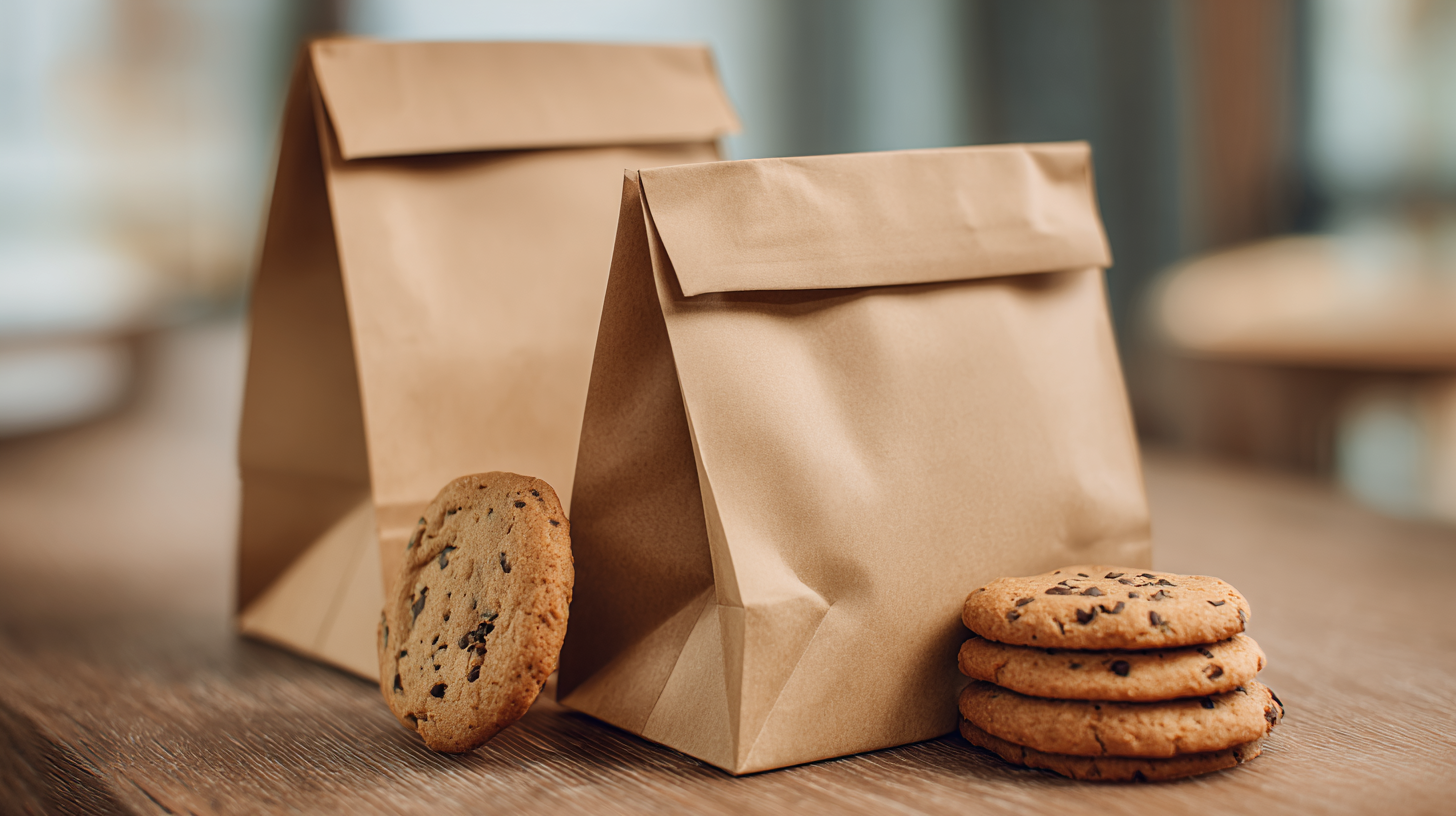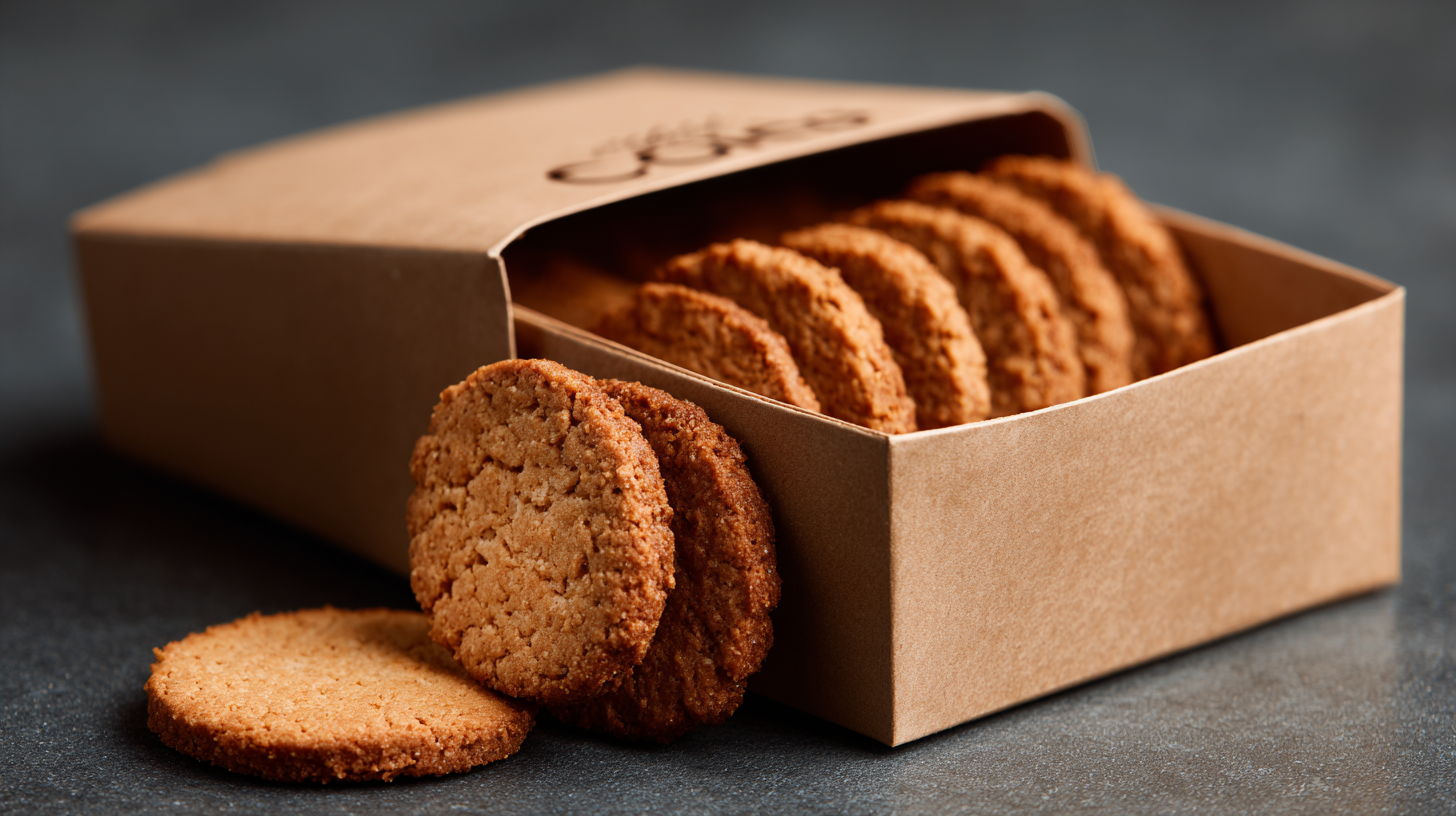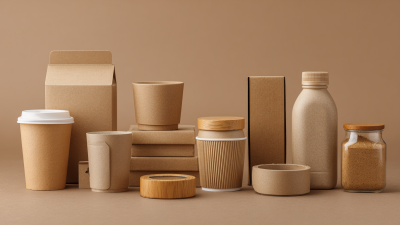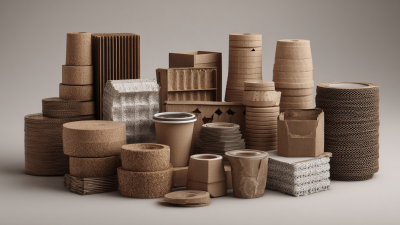The Science Behind Eco-Friendly Cookie Packaging Innovations
In recent years, the demand for sustainable solutions has surged across various industries, prompting a significant shift in how products are packaged, particularly in the burgeoning "cookie packaging" market. According to a report by Smithers, the global sustainable packaging market is projected to reach $500 billion by 2024, with eco-friendly options gaining traction among consumers who prioritize environmental responsibility. Furthermore, a survey by Nielsen revealed that 73% of consumers are willing to pay more for products with sustainable packaging, highlighting the growing recognition of its importance. As cookie brands look to reduce their carbon footprint while appealing to environmentally conscious shoppers, innovative packaging solutions such as biodegradable materials, compostable wrappers, and minimalistic designs are becoming essential. This eco-friendly paradigm not only meets consumer expectations but also contributes to a healthier planet, illustrating the compelling intersection of sustainability and market demand within the cookie packaging sector.

The Importance of Eco-Friendly Packaging in the Food Industry
In recent years, the food industry has increasingly recognized the vital role that eco-friendly packaging plays in promoting sustainability. The shift towards environmentally conscious packaging solutions is no longer optional; it is essential for businesses aiming to meet consumer expectations and mitigate their environmental impact. Traditional packaging poses significant challenges, such as plastic waste that pollutes oceans and landfills. In response, companies are now exploring biodegradable materials, compostable options, and innovative designs that reduce waste while maintaining product integrity.
Moreover, the transition to eco-friendly packaging can enhance a brand’s reputation and customer loyalty. Consumers are more informed than ever about the environmental effects of their purchases and often prefer products with sustainable packaging. This trend encourages manufacturers to invest in research and development of new materials that not only protect the food but also align with eco-conscious values. By prioritizing sustainable packaging solutions, the food industry not only addresses environmental concerns but also taps into a growing market segment that values responsibility and sustainability, showcasing that profitability and ecological mindfulness can go hand in hand.
Innovative Materials Revolutionizing Cookie Packaging
In recent years, the push for sustainability has led to remarkable innovations in cookie packaging materials. Traditional packaging, often reliant on plastics, poses significant environmental challenges. However, companies are now exploring biodegradable and compostable options that are not only eco-friendly but also retain the freshness of their delicious contents. Innovations such as seaweed-based films and mushroom-derived materials are gaining traction, showcasing a commitment to reducing waste while offering unique branding possibilities.

Tips for choosing eco-friendly packaging include looking for materials that have certifications, such as compostability or recyclability symbols. Additionally, businesses can consider minimalistic designs that use less material overall, promoting an environmentally conscious image. Partnering with suppliers who prioritize sustainability can also streamline the process and enhance the overall impact of eco-friendly packaging.
Another exciting avenue in cookie packaging is the use of plant-based inks and dyes. These not only reduce harmful chemical exposure but also align with a brand’s eco-friendly mission. As consumer preference shifts towards sustainable options, embracing these innovative materials will not only appeal to environmentally conscious customers but also strengthen a brand’s presence in a competitive market.
The Role of Biodegradable and Compostable Options
Biodegradable and compostable packaging options play a crucial role in minimizing the environmental footprint of cookie production and consumption. Unlike traditional plastic packaging, which can take hundreds of years to decompose, biodegradable materials are designed to break down naturally through the action of microorganisms. This process significantly reduces landfill waste and helps mitigate pollution, making biodegradable packaging an appealing alternative for eco-conscious consumers.
Compostable packaging takes this a step further by not only breaking down but also contributing valuable nutrients back to the soil. When disposed of in a composting environment, these materials decompose completely, leaving no toxic residue behind. Many cookie brands are now opting for this sustainable approach, alongside a commitment to using organic ingredients, to create a more holistic eco-friendly product.
As consumers increasingly prioritize sustainability, the shift towards biodegradable and compostable packaging reflects a broader trend in the food industry that supports environmental responsibility and innovation.
How Sustainable Packaging Affects Consumer Choices
The rising awareness of environmental issues has led consumers to evaluate their choices more critically, particularly when it comes to food packaging. Sustainable packaging, especially in the cookie industry, is not just about reducing waste; it also plays a crucial role in shaping consumer preferences. Eco-friendly materials, such as biodegradable films or recyclable cardboard, resonate with eco-conscious buyers, influencing their purchasing decisions. Consumers are increasingly willing to select products that align with their values, often prioritizing brands that showcase their commitment to sustainability.
Moreover, the design and functionality of sustainable packaging can enhance the overall product appeal. Innovative features such as resealable bags, multi-use containers, and visually engaging designs can further attract consumers. When brands effectively communicate the benefits of their eco-friendly packaging, they not only appeal to environmentally aware customers but also create a sense of community and responsibility among their audience. This shift towards sustainable packaging embodies a broader trend where consumers seek to contribute positively to the environment while enjoying their favorite treats, signifying a new direction in consumer behavior aimed at promoting sustainability.
The Impact of Eco-Friendly Cookie Packaging on Consumer Choices
Technological Advances Shaping Future Packaging Solutions
Recent technological advances are driving innovative eco-friendly cookie packaging solutions that cater to environmentally conscious consumers. One of the critical developments is the use of biodegradable materials such as plant-based films and compostable papers. These materials not only reduce plastic waste but also break down naturally, leaving little to no environmental footprint. Companies are increasingly exploring these options, transforming their packaging processes and contributing positively to sustainability efforts.

In addition to material innovation, technologies like smart packaging are emerging to enhance the overall consumer experience. Sensors integrated into packaging can monitor freshness, ensuring that cookies remain delightful for longer periods while minimizing spoilage. Furthermore, advancements in digital printing allow manufacturers to create eye-catching designs that communicate the eco-friendly story behind the product, appealing to an audience that values transparency and sustainability. These technological strides reflect a growing commitment within the food industry to combine functionality with environmental responsibility, ultimately shaping a greener future for packaging solutions.
Related Posts
-

Transforming Sustainability in Food Packaging: How Eco-Friendly Materials are Reshaping Consumer Choices
-

Exploring Eco Friendly Innovations in Carton Packaging for Sustainable Brands
-

The Ultimate Guide to Choosing Eco Friendly Packaging Supplies for Your Business
-

Revolutionizing Sustainable Food Packaging Solutions for a Greener Future
-

Innovative Packaging Materials Transforming Sustainability in the Modern Age
-

Innovative Trends in Food Packaging Design You Need to Know for Sustainable Choices
